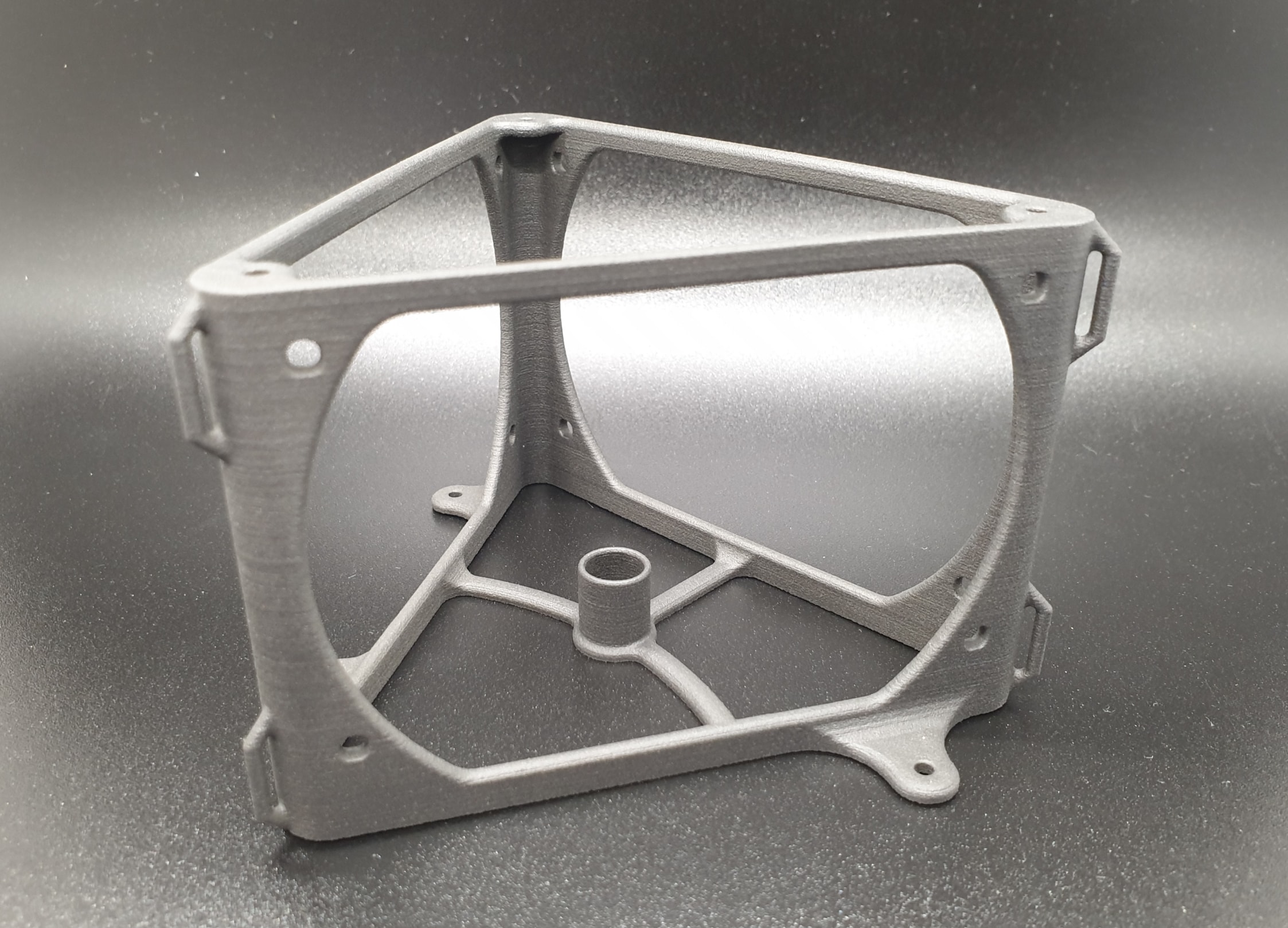A novel robot designed for low gravity could be the key to future asteroid exploration. Dubbed SpaceHopper, this three-legged “hopping” robot is described as a revolutionary mobility platform that will enable new missions to explore a vast uncharted part of our solar system. Behind the project is a team of ten undergraduate students in their final year that decided to optimize the robot’s design by 3D printing carbon-reinforced components.
The students, all majoring in various engineering fields, turned to Zürich-based firm Scheurer Swiss, known for its long-standing expertise with fiber composite technologies, to 3D print the parts that ensure the robot has more stability and is lightweight while hopping in zero gravity.
Space exploration can be tricky and extremely dangerous, but asteroids have an added challenge. Unlike Mars or the Moon, where gravity is respectively 38% and 16% that of Earth, asteroids have a very low gravity. It is so small that it is not the friendliest location to drive a rover vehicle or walk around. This difficult – especially weightless – environment of small astronomical bodies requires a new, unique research solution. The “SpaceHopper” robotics project supported by Scheurer Swiss aims to be just that.
Backed by experts from research, industry, and lightweight construction, the ten promising engineers from Swiss research university ETH Zurich and Zurich University of Applied Sciences (ZHAW) have developed and built a revolutionary mobility platform using additive technologies. Designed for exploring asteroids, SpaceHopper’s movements are controlled with artificial intelligence (AI), such that it can jump and reorient only by moving its legs.
Scheurer Swiss CEO, Dominik Scheurer, points out that carbon-reinforced 3D printing is ideally suited for the robotic components of the SpaceHopper because it can virtually produce any shape. He states that hollow bodies, such as the robot’s legs, can be provided with support structures to stabilize them without unnecessarily weighing them down. Like in many space-related innovations, additive manufacturing is the ideal manufacturing process for the SpaceHopper and is cost-effective.
Further commenting on the robot, Emma Steinke, one of the project designers and a mechanical engineering student at ETH Zürich, said one of the challenges was to “make the legs as thin-walled as possible to minimize the overall weight of the robot.” Regardless, they still have to withstand the forces of the bouncing impact.
“We are glad to have Scheurer Swiss on our side as a lightweight design expert. The competent expertise around state-of-the-art fiber composite technologies and 3D printing as well as the large network of Scheurer Swiss were very valuable for us and contributed to the success of our focus project from the very beginning,” highlighted Steinke.

Carbon-reinforced 3D printing by Scheurer Swiss for the electronic structure of the bouncing space robot. Image courtesy of Scheurer Swiss.
After only eight months of development, the team successfully presented the prototype at the end of May 2022 at ETH Zürich, home to eight of the team’s students and the place where the SpaceHopper idea originated as part of the university’s Robotic Systems Lab. During the public performance, the team proved that an intermediate fidelity prototype of the three-legged mobility platform worked. This was primarily thanks to an ingenious differential drive (a two-wheeled drive system with independent actuators for each wheel) in its hip.
Designing this special part meant the team spent hours on CAD. Once they honed in on the digital model they needed, the project’s mechanical design team could 3D print the single components and then integrate them. According to the group, they also made the first test rig to connect the differential drive to two motors to check whether the mechanism works and if the software can command the desired end-effector positions of SpaceHopper’s leg.

Carbon-reinforced robot leg from the Scheurer Swiss 3D printer for the innovative bouncing robot. Image courtesy of Scheurer Swiss.
Asteroids represent the bits and pieces left over from the process that formed the inner planets, including Earth, and may harbor the answers to fundamental questions, such as the formation of the solar system and our existence. Furthermore, several initiatives are attempting to find ways to extract asteroid resources for resupplying during long-duration space missions.
With such challenging goals ahead, the SpaceHopper team is taking the next leap in legged space robotics and hopes their robot will enable a broad range of new missions to explore asteroids like Ceres, Psyche, and 162173 Ryugu. For now, the main goal is to prove that the robot can hop large distances, land on a predetermined point, control its attitude mid-air, carry a scientific payload, and stand back up after a failed landing. The team has also been working on an electronics subsystem that houses the sensor interfaces of the robot, its power distribution system, and an onboard computer that will enable the mechanical and software-related capabilities of low-gravity motion.
Subscribe to Our Email Newsletter
Stay up-to-date on all the latest news from the 3D printing industry and receive information and offers from third party vendors.
You May Also Like
Precision at the Microscale: UK Researchers Advance Medical Devices with BMF’s 3D Printing Tech
University of Nottingham researchers are using Boston Micro Fabrication‘s (BMF) 3D printing technology to develop medical devices that improve compatibility with human tissue. Funded by a UK grant, this project...
3D Printing Webinar and Event Roundup: April 21, 2024
It’s another busy week of webinars and events, starting with Hannover Messe in Germany and continuing with Metalcasting Congress, Chinaplas, TechBlick’s Innovation Festival, and more. Stratasys continues its advanced training...
3D Printing Webinar and Event Roundup: March 17, 2024
It’s another busy week of webinars and events, including SALMED 2024 and AM Forum in Berlin. Stratasys continues its in-person training and is offering two webinars, ASTM is holding a...
3D Printed Micro Antenna is 15% Smaller and 6X Lighter
Horizon Microtechnologies has achieved success in creating a high-frequency D-Band horn antenna through micro 3D printing. However, this achievement did not rely solely on 3D printing; it involved a combination...





























